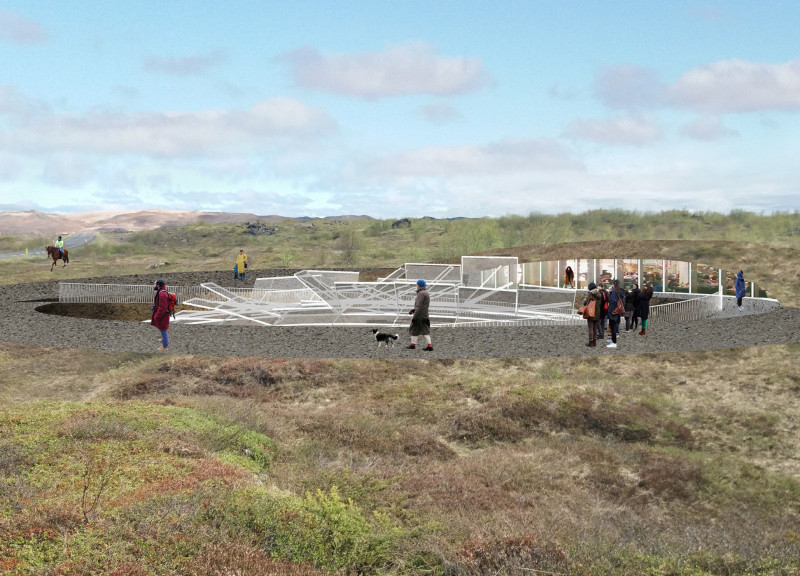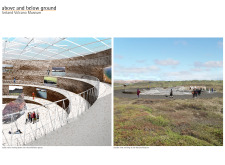5 key facts about this project
The Iceland Volcano Museum is located in the Tundra landscape of Iceland and serves as an educational facility centered on volcanism. The design immerses visitors in the geological phenomena of the region, creating a narrative that captures the experience of exploring the earth's interior. The overall concept reflects characteristics of volcanic activity, employing a form that interacts with the surrounding environment.
Conceptual Framework
The design emphasizes a journey downward into the earth, allowing visitors to experience geological layers firsthand. Inspired by Jules Verne's *Voyage au Centre de la Terre*, the layout guides individuals from the surface to an underground exhibition space. Spiral ramps connect outdoor areas to the interior, highlighting the theme of exploration and the natural world.
Spatial Organization
Inside the museum, raw inclined walls create flexible exhibition spaces suitable for various educational purposes. This design provides extensive surfaces for displaying artifacts and information, enhancing interaction with visitors. Alcoves that extend into the rock add depth and diversity to the experiences offered, allowing for both static exhibits and dynamic presentations like performances and lectures.
Material Integration
Construction utilizes local volcanic rock and lava, emphasizing an approach that repurposes excavated materials. This choice not only establishes a direct link to the site but also reinforces a commitment to sustainability. By minimizing transportation needs and utilizing materials inherent to the landscape, the building’s design aligns with Iceland’s geological heritage and contextual identity.
Environmental Considerations
The climate management of the museum leverages the earth's thermal properties to maintain comfortable interior conditions. The roof structure includes lids that facilitate natural airflow, ensuring fresh air circulation. Photovoltaic cells are incorporated to help manage energy use while providing operational power. This focus on sustainability reflects a thoughtful approach to environmental responsibility.
The museum’s crater formation distinguishes the building and enhances the experience through dramatic spatial arrangements. Its design encourages an understanding of Iceland's unique geological identity while promoting educational engagement. The overall integration of materials and environmental considerations illustrates a commitment to creating a space that resonates with its natural surroundings.






















































